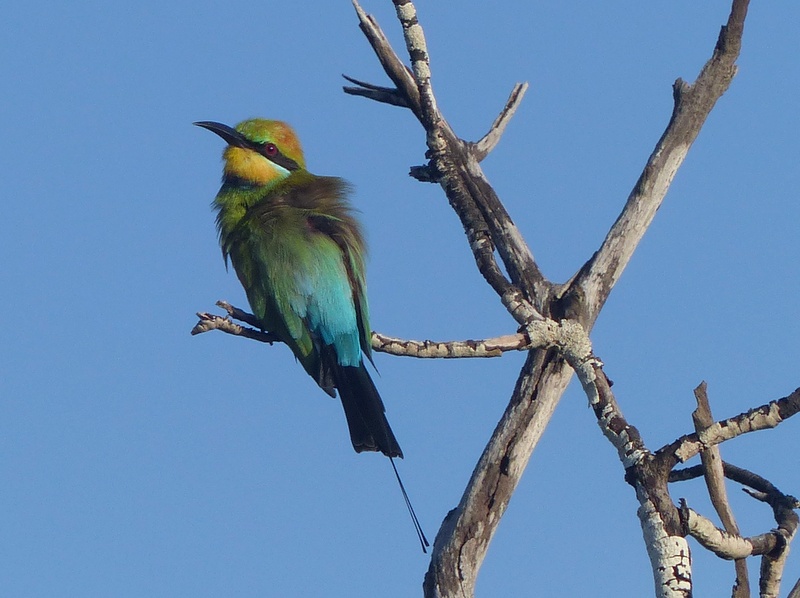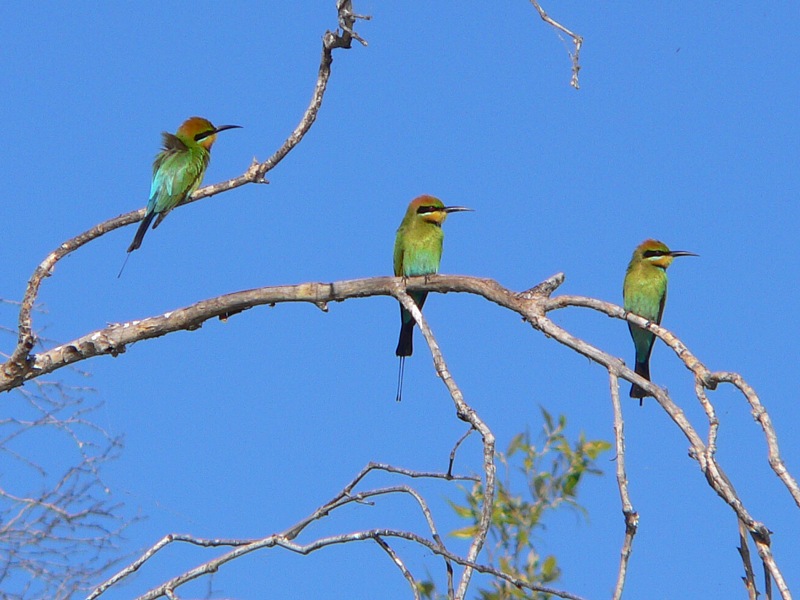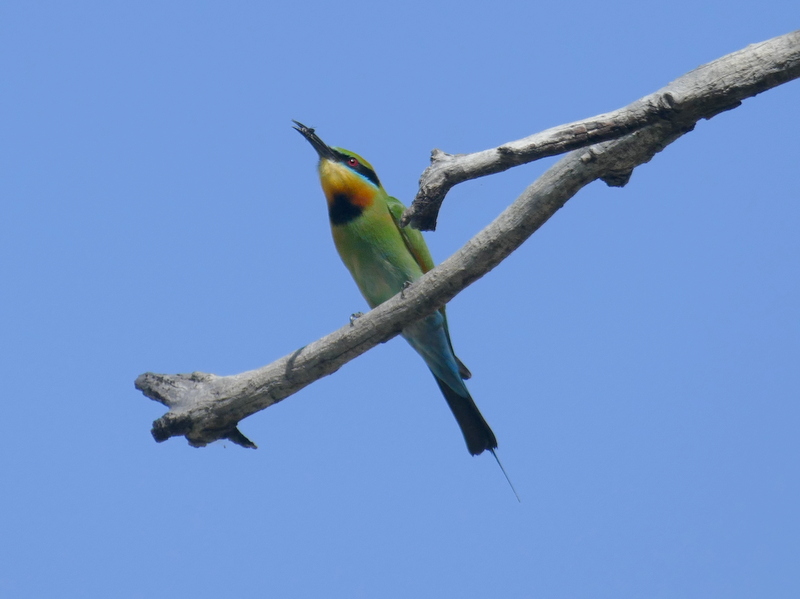
A male rainbow bee-eater with long fresh tail streamers. Photo: Ian Fraser.
Last week I read some good news at a time when there didn’t seem to be much about. It was a small thing, but it cheered me – the rainbow bee-eaters are back from their annual summer visit to the tropics.
If you’ve not seen them, perhaps you could make it a goal to do so over the next few months – they are worth it. There are 30 species, all very beautiful, in Europe (just one), Africa and southern Asia – and of course Australia.
I’ve been lucky enough to see half of them over the years, and I can confidently say our only species is up there with the best of them.
It’s a sleek elegant bird with a long down-turned bill and striking tail streamers, decked out in blues and greens and gleaming coppery tones. In flight, which is breathtakingly quick and assured, their triangular wings form a kite shape which is, with a little practice, unmistakeable. Their distinctive ‘prrip prrip’ in the sky is often the first sign they are around.
You probably won’t see them much in the suburbs unless they are passing over, but they can turn up in any woodland or dry forest reserve, perching on a branch and launching into the air to chase a passing insect – and they don’t often miss their target.
Perhaps their favoured prey is dragonflies, because they offer a big meal, and this gives you an idea of how adept a bee-eater is in the air. However flying ants, wasps and bees make up the bulk of their diet, though anything with wings is on the menu.
As a boy in the Adelaide Hills I watched them on a hot summer day by a creek in the dry hills, and was curious to see them tap their prey on a branch before eating it.

Rainbow bee-eaters perch in the open looking for passing snacks. The female on the right has short tail streamers while the male on the left has a broken one, which usually happens eventually. Photo: Ian Fraser.
I eventually realised they were tapping the abdomen – if it sounded hard it probably meant it had a sting, so was a wasp or bee. In that case, they wiped it vigorously on the branch to remove the sting before eating it, but if it was soft it just went straight down. (Back then we just called them rainbow birds, and I still privately reckon it wasn’t at all a bad name.)
The best place to look for them though is around the lakes or along the rivers, especially the Murrumbidgee. Tharwa is a good choice, either at the Sandwash or along the river past the bridge downstream of Tharwa.
This is partly because there are always insects – especially dragonflies! – around water, and partly because they nest in riverbanks. We don’t often think of birds as being good burrowers (though there are quite a few, from pardalotes to shearwaters), but bee-eaters have developed a most unexpected approach to the task.
They begin by perching on the vertical bank and breaking the surface with their bill, but change their approach entirely once they have an opening.

A rainbow bee-eater with dragonfly, a favoured food item though hard to catch. Photo: Ian Fraser.
Bizarrely they balance on a tripod of beak and wing ‘elbows’ and pedal furiously with their feet, hurling the beak-loosened earth out behind them.
From outside the burrow, the earth appears hurled out as though from a sandblaster; some pairs have a young male ‘helper’ to assist with the work. Eventually they construct a burrow about 1.5 metres long, with a spacious chamber at the end.
Usually they nest in colonies, with all members contributing to the defence of the nests. Not long after the chicks fledge, they fly north with their flock to escape the cold of Canberra.
When they get to the tropical far north, they reunite with other bee-eaters who have stayed in the warmth all year round and bred there. However, many of those flying from the south don’t stop in northern Australia, but continue on across Torres Strait to New Guinea and nearby islands, including Indonesia.
When life seems a bit too dreary and depressing, as it sometimes can when the news seems all bad, nature can help us to understand that all is not without hope or joy. And bee-eaters seem to do the job particularly well.
Ian Fraser is a Canberra naturalist, conservationist and author. He has written on all aspects of natural history, advised the ACT Government on biodiversity and published multiple guides to the region’s flora and fauna.












